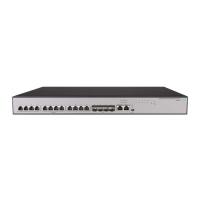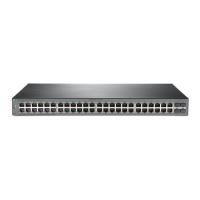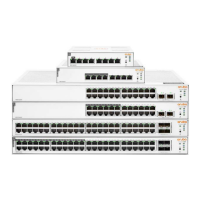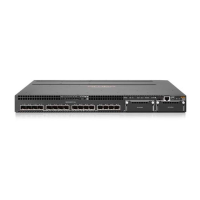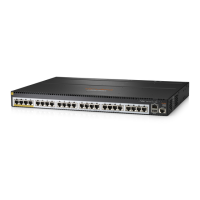Page 36 Spanning Tree
If you modify any global settings, click Apply to save the changes for the current boot session. The
changes take effect immediately but are not retained across a switch reset unless you click Save Con-
figuration.
Port STP Settings
To configure these settings on one or more interfaces, select the desired interfaces on the Spanning
Tree Configuration page and click Edit.
Spanning Tree Interface Status Table
Interface The port or trunk associated with the rest of the data in the row.
Port Role The role of the port with respect to spanning tree functionality, which is one of the following:
Root: A port on the non-root bridge that has the least-cost path to the root bridge.
Designated: A port that has the least-cost path to the root bridge on its segment.
Alternate: A blocked port that has an alternate path to the root bridge.
Backup: A blocked port that has a redundant path to the same network segment as
another port on the bridge.
Disabled: The port is administratively disabled and is not part of the spanning tree.
Port Forwarding State
Blocking: The port discards user traffic and receives, but does not send, BPDUs. During
the election process, all ports are in the blocking state. The port is blocked to prevent
network loops.
Listening: The port sends and receives BPDUs and evaluates information to provide a
loop-free topology. This state occurs during network convergence and is the first state in
transitioning to the forwarding state.
Learning: The port learns the MAC addresses of frames it receives and begins to popu-
late the MAC address table. This state occurs during network convergence and is the
second state in transitioning to the forwarding state.
Forwarding: The port sends and receives user traffic.
Disabled: The port is administratively disabled and is not part of the spanning tree.
Port Priority The priority for the port within Spanning Tree. This value is used in determining which port on
a switch becomes the root port when two ports have the same least-cost path to the root. The
port with the lower priority value becomes the root port. If the priority values are the same, the
port with the lower interface index becomes the root port.
Port Path Cost The path cost from the port to the root bridge.
Auto Edge When enabled, allows the interface to become an edge port if it does not receive any BPDUs
within a given amount of time.
Point-to-point MAC Indicates whether the link type for the interface is a point-to-point link.
Field Description
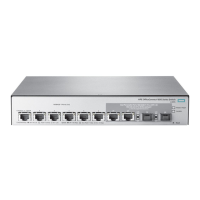
